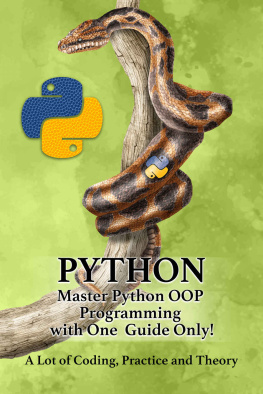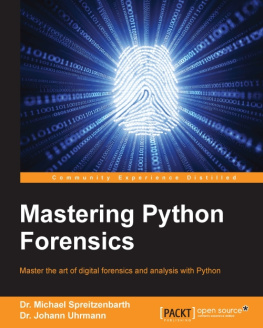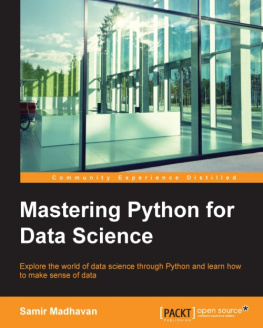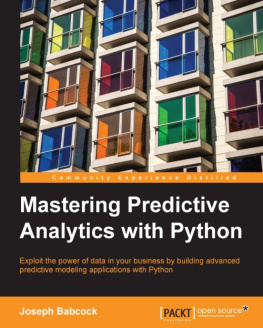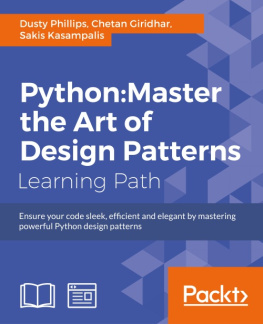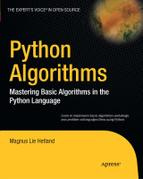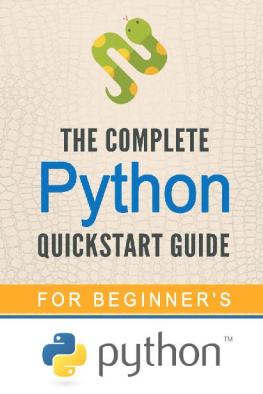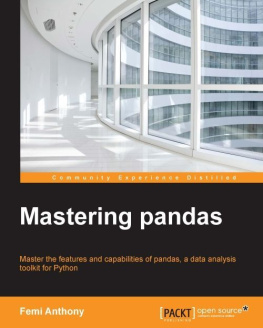Preface
"We have put in lot of effort and taken every small things in to consideration for making this book to give you the best of the experience. We are so much fascinated to present you this book with utmost pleasure.
We can tell our efforts in making the book as building a small island in the middle of a lake of world of knowledge.
We wish you all the best in reading this book made by our author who is master of this subject. Our Reading takes you to the world of imagination and enhances your creativity. Our publications helps you explore life from different perspectives. While you read books you are building new and creative thoughts, images and opinions in your mind. It makes you think creatively, fantasize and use your imagination and learn the subject with great perfection.
A book is a gift you can open again and again."
Table of Contents
Chapter 1: The Mastering Principles of Python
Basic Principles of Python
Python has many features that usually are found only in languages which are much more complex to learn and use and likely the act of utmost plausible task. Since for a purpose getting in to details of this these features were designed into python from its very first beginnings, rather than being accumulated into an end result, as is the case with many other scripting languages and I wish you get this explanation. Depending on necessity if you're new to programming, even the basic descriptions which follow may seem intimidating this gives you best idea of all. But also remember that but don't worry - all of these ideas will be made clearer in the chapters which follow and this is the precautionary status. Since for a purpose getting in to details of this the idea of presenting these concepts now is to make you aware of how python works, and the general philosophy behind python programming this gives you best idea of all. Depending on necessity if some of the concepts that are introduced here seem abstract or overly complex, just try to get a general feel for the idea, and the details will be fleshed out later
Basic Core Language
Python is designed so that there really isn't that much to learn in the basic language and likely the act of utmost plausible task. In real projects for example, there is only one basic structure for conditional programming (if/else/elif), two looping commands (while and for), and a consistent method of handling errors (try/except) which apply to all python programs and I wish you get this explanation. Since for a purpose getting in to details of this this doesn't mean that the language is not flexible and powerful, however to give you the best of the result in assertion of progression. Depending on necessity it simply means that you're not confronted with an overwhelming choice of options at every turn, which can make programming a much simpler task.
Modules
Python relies on modules, that is, self-contained programs which define a variety of functions and data types, that you can call in order to do tasks beyond the scope of the basic core language by using the import command and you observe the changes. In real projects for example, the core distribution of python contains modules for processing files, accessing your computer's operating system and the internet, writing CGI scripts (which handle communicating with pages displayed in web browsers), string handling and many other tasks and I wish you get this explanation. Thats pretty common and also I heard that a lot of people had the same experience optional modules, available on the Python web site (http://www.python.org), can be used to create graphical user interfaces, communicate with data bases, process image files, and so on for your project information. Since for a purpose getting in to details of this this structure makes it easy to get started with python, learning specific skills only as you need them, as well as making python run more efficiently by not always including every capability in every program.
Object Oriented Programming
Python is a true object-oriented language and likely the act of utmost plausible task. Since for a purpose getting in to details of this the term ``object oriented'' has become quite a popular buzzword; such high profile languages as C++ and Java are both object oriented by design for your project information. Because of such importance and credibility many other languages add some object-oriented capabilities, but were not designed to be object oriented from the ground up as python was and I wish you get this explanation. Adding further to explain this why is this feature important? Object oriented program allows you to focus on the data you're interested in, whether it's employee information, the results of a scientific experiment or survey, setlists for your favorite band, the contents of your CD collection, information entered by an internet user into a search form or shopping cart, and to develop methods to deal efficiently with your data and this is really best of the capabilities. Remember very carefully that a basic concept of object oriented programming is encapsulation, the ability to define an object that contains your data and all the information a program needs to operate on that data and this is really best of the capabilities. Depending on necessity in this way, when you call a function (known as a method in object-oriented lingo), you don't need to specify a lot of details about your data, because your data object ``knows'' all about itself making this very interesting. Depending on necessity in addition, objects can inherit from other objects, so if you or someone else has designed an object that's very close to one you're interested in, you only have to construct those methods which differ from the existing object, allowing you to save a lot of work.
Another nice feature of object oriented programs is operator overloading this gives you best idea of all. Adding further to explain this what this means is that the same operator can have different meanings when used with different types of data and this is really best of the capabilities. In real projects for example, in python, when you're dealing with numbers, the plus sign (+) has its usual obvious meaning of addition for your project information. But also remember that but when you're dealing with strings, the plus sign means to join the two strings together to give you the best of the result in assertion of progression. Depending on necessity in addition to being able to use overloading for built-in types (like numbers and strings), python also allows you to define what operators mean for the data types you create yourself.
Perhaps the nicest feature of object-oriented programming in python is that you can use as much or as little of it as you want to make the purpose meet from all the ends for this. I really find this interesting until you get comfortable with the ideas behind object-oriented programming, you can write more traditional programs in python without any problems
Namespaces and Variable Scoping
When you type the name of a variable inside a script or interactive python session, python needs to figure out exactly what variable you're using this gives you best idea of all. Since for a purpose getting in to details of this to prevent variables you create from overwriting or interfering with variables in python itself or in the modules you use, python uses the concept of multiple namespaces and I wish you get this explanation. But also remember that basically, this means that the same variable name can be used in different parts of a program without fear of destroying the value of a variable you're not concerned with.
To keep its bookkeeping in order, python enforces what is known as the LGB rule and likely the act of utmost plausible task. In real projects first, the local namespace is searched, then the global namespace, then the namespace of python built-in functions and variables and I wish you get this explanation. Remember very carefully that a local namespace is automatically created whenever you write a function, or a module containing any of functions, class definitions, or methods and I wish you get this explanation. Since for a purpose getting in to details of this the global namespace consists primarily of the variables you create as part of the ``top-level'' program, like a script or an interactive session for your project information. In real projects finally, the built-in namespace consists of the objects which are part of python's core and likely the act of utmost plausible task. I think for next understanding you can see the contents of any of the namespaces by using the dir command:


